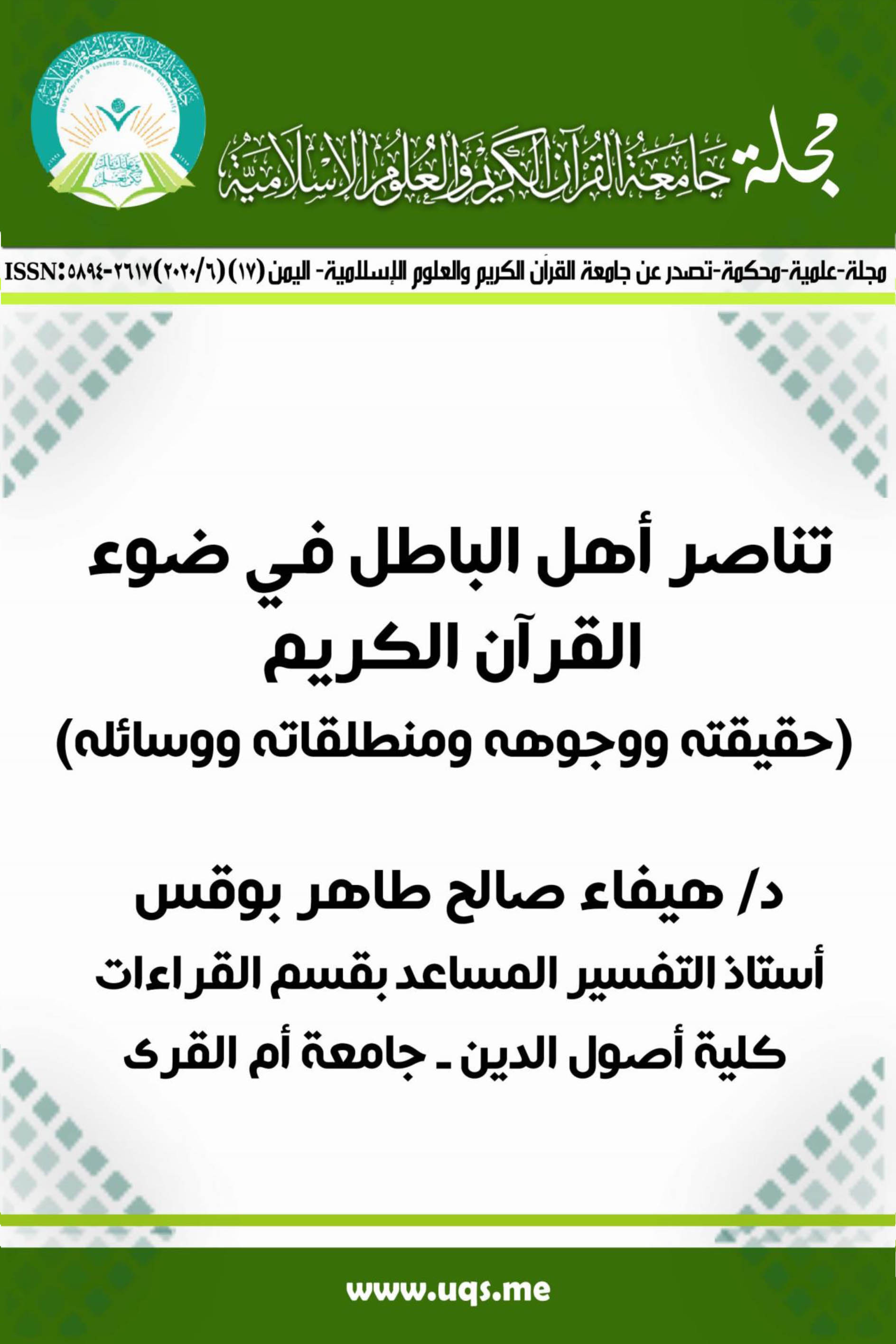Supporting the people of falsehood in the light of the Holy Qur’an
(its truth, aspects, principles, and means)
DOI:
https://doi.org/10.61821/nepk8d88Keywords:
Victory, object of invalid objection, premise of victory, means of victoryAbstract
This research: The support of the people of falsehood in the light of the Noble Qur’an (its truth, its faces, its starting points and its means). It aims to: To clarify the reality of the victory among the people of falsehood and to explain its faces and its starting points and to mention its meansIn this research, I followed the descriptive deductive approach, and reached through it a number of results, including:That advocacy calls the meaning of cooperation over victory by various means and methods and is not necessarily based on complete loyalty, and victory may occur between the people of falsehood apparently in the world, but in fact it contains a defect in its structure, because it is not based on foundations that guarantee its continuity, honesty, permanence, and inclusion for the people of falsehood is war on the right or the interest. As for the hereafter, there is no victory between the people of falsehood.There are aspects of rivalry between the people of falsehood in the world, such as loyalty, cooperation, support for situations, reproduction, reinforcement, etc., and those aspects of rivalry between them vary in their levels, coverage, and fields .. and they vary into theory and practice and have strategic and tactical dimensions. And it relates to various data dictated by reality and planning.Likewise, the sympathy between the people of falsehood has fixed and variable starting points, for it is fixed: it has religious, intellectual, cultural, ethical, educational and behavioral dimensions, and a planning methodology. And the variable: reference to hypocrisy and immediate interests. And among the people there are various theoretical and practical means, of varying levels.This research came in the introduction and four investigations and a conclusion.
Downloads

Downloads
Published
Issue
Section
License
©This article is an open access article distributed under the terms and conditions of the Creative Commons Attribution (CC BY) license



